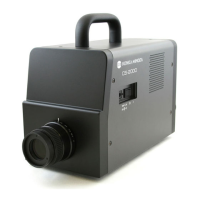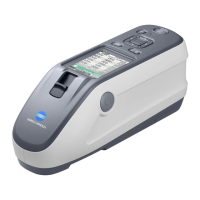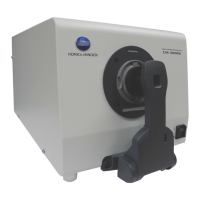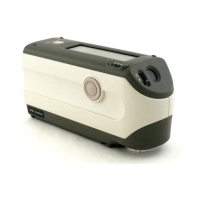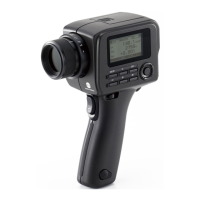27
Chapter 1
1.2 Safety precautions
WARNING
Precautions when applying scattered radiation
correction (IG) processing
• It is expected that scattered radiation correction pro-
cessing will remove scattered radiation components
and
thus enhance subject contrast; however, it does
not ensure that the same image quality as that which
is generated when a grid is used will be obtained.
• Applying scattered radiation correction processing
will not have any eect if the desired image is not
contained in the original signals.
• Applying the scattered radiation correction processing
may result in unnatural images. In particular, applying
this processing to images for which grids were used
may increase the contrast too sharply. Make sure to
perform image verication to conrm if the application
of this processing is suitable for diagnosis.
• Preset a tube voltage value that is close to the ac-
tual exposure conditions as the image processing
parameter of the Exam. Tag.
Precautions on magnetic card reader
• Check that patient information read from a mag-
netic card is consistent with the information written
in the magnetic card.
• Do not connect multiple magnetic card readers to a
single device. It may cause malfunctions.
• Do not change the settings of the dip switch on the
bottom of the magnetic card reader.
Precautions on bar code reader
• The reading window discharges a laser, so take
care not to look in the laser or point the laser to-
ward the eye. In addition, perform periodic inspec-
tion of the reading window.
• Laser is discharged during disassembly. Do not dis-
assemble.
Precautions on blackening process for areas
outside the exposure eld
• In the blackening process for areas outside the ex-
posure eld, if the distance between the edge of the
X-ray
exposure eld and the edge of the cassette is
3 cm or less, the masking function may fail to recog-
nize the masking eld. When using a collimator, set
the
edge of the X-ray exposure eld to be sucient-
ly distant from the edge of the cassette
. In addition,
use preview on the [Output] tab or [Overlay] tab to
check that the masking area is appropriately set
before the image is output, and modify the masking
area on the viewer screen if needed.
CAUTION
Notes on the chest wall blackening process
• Recognition of unexposed areas on the breast
may be lost in the chest wall blackening process.
Use preview on the [Output] tab or [Overlay] tab to
check that the chest wall blackening area is not in
the diagnosis area before the image is output, and
set the chest wall blackening process to OFF on
the viewer screen if needed.
Precautions on mammogram
• For United States of America, this device is not in-
tended to use for Mammography.
• Use upon conrming that missing regions in images
on the reception area and exposure eld exceeding
the reception area are within the allowable range.
Also, make sure that additional information such as
stamps do not overlap with the breast area in im-
ages.
• Confirm that additional information such as mark-
ers and stamps is not superimposed on the breast
area.
• When displaying two mammograms on two frames,
ne-tune and check the horizontal positions of the
images.
Precautions for the use of the highlight func-
tion for the tube/gauze
• If the tube/gauze is dicult to identify on the image,
adjust the highlight level. When the tube/gauze is
highlighted too much, lower the highlight level.
Precautions when merging study images
• When studies are merged, their patient and study
information are updated.
Precautions on the lung lack/motion blur de-
tection function
• In images showing lesions, foreign substances,
etc., lung lack or motion blur may be detected even
when none exist.
Precautions on multi-study function
• Be careful since, in order for patient information to
be determined automatically from the four informa-
tion variables (patient ID, name, date of birth, and
sex), a patient will not be treated as the same pa-
tient if the four variables dier.
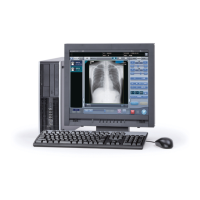
